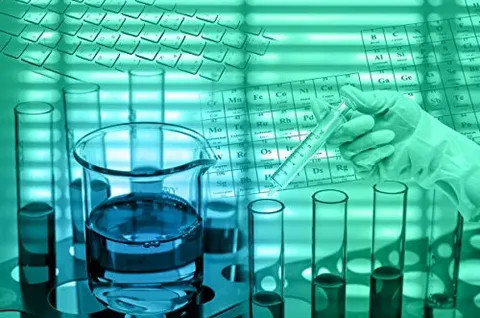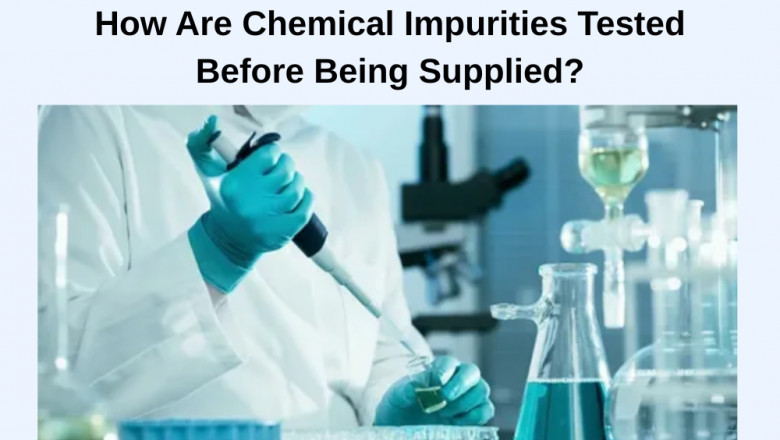views
Ensuring the purity and safety of chemical substances is crucial in industries like pharmaceuticals, biotechnology, and food manufacturing. Even trace amounts of chemical impurities can affect the efficacy, safety, and regulatory compliance of products. But how do suppliers ensure that their chemicals are free from harmful impurities before supplying them? Let's explore the testing processes involved.
Understanding Chemical Impurities

What Are Chemical Impurities?
Chemical impurities are unwanted substances that may be present in raw materials, intermediates, or finished products. These can arise from various sources:
- Raw Materials: Impurities can be introduced during the extraction or synthesis of starting materials.
- Manufacturing Processes: Chemical reactions, solvents, and equipment can contribute to impurities.
- Storage Conditions: Exposure to light, heat, or moisture can lead to degradation and formation of impurities.
Even minute quantities of certain impurities can have significant effects, making their detection and control essential.
The Importance of Impurity Testing
Why Is Impurity Testing Necessary?
Impurity testing is vital for several reasons:
- Safety: Some impurities can be toxic or cause adverse reactions.
- Efficacy: Impurities may interfere with the intended action of the active ingredient.
- Regulatory Compliance: Regulatory agencies set strict limits on acceptable impurity levels.
- Product Quality: Ensures the consistency and reliability of the product.
By identifying and quantifying impurities, manufacturers can take corrective actions to mitigate risks.
Common Analytical Techniques for Impurity Testing
1. High-Performance Liquid Chromatography (HPLC)
HPLC is a widely used technique for separating and analyzing compounds in a mixture. It helps in identifying and quantifying organic impurities in pharmaceuticals and other chemicals.
2. Gas Chromatography (GC)
GC is used to analyze volatile substances. It's particularly effective for detecting residual solvents and other volatile impurities.
3. Mass Spectrometry (MS)
MS provides detailed information about the molecular structure of compounds. It's often coupled with HPLC or GC to identify and quantify impurities at trace levels.
4. Nuclear Magnetic Resonance (NMR) Spectroscopy
NMR spectroscopy helps in determining the structure of organic compounds, aiding in the identification of unknown impurities.
5. Ultraviolet-Visible (UV-Vis) Spectroscopy
UV-Vis spectroscopy is used for detecting and quantifying impurities that absorb ultraviolet or visible light.
6. Thin-Layer Chromatography (TLC)
TLC is a simple and cost-effective method for identifying impurities, though it's less precise than HPLC or GC.
Each of these techniques has its strengths and is chosen based on the nature of the sample and the impurities of interest.
Steps Involved in Impurity Testing
1. Sample Collection
Representatives samples are collected from raw materials, intermediates, or finished products. Proper sampling techniques are crucial to ensure that the samples are representative of the entire batch.
2. Sample Preparation
Samples may need to be prepared by dissolving, diluting, or filtering to make them suitable for analysis.
3. Analytical Testing
Using the appropriate analytical techniques, the samples are tested to identify and quantify impurities.
4. Data Analysis
The results are analyzed to determine the types and concentrations of impurities present.
5. Reporting
Detailed reports are generated, documenting the findings and any actions taken.
Regulatory Guidelines for Impurity Testing
International Council for Harmonisation (ICH)
The ICH provides guidelines such as Q3A and Q3B, which set limits on impurities in drug substances and products.
United States Pharmacopeia (USP)
USP chapters like <467> and <232> provide standards for residual solvents and elemental impurities, respectively.
European Medicines Agency (EMA)
EMA guidelines align with ICH and USP standards, ensuring consistency across international markets.
Compliance with these guidelines ensures that products meet safety and quality standards.
Challenges in Impurity Testing
1. Complex Sample Matrices
Samples containing complex mixtures may require advanced techniques and thorough validation to accurately detect impurities.
2. Low-Level Impurities
Detecting trace amounts of impurities requires highly sensitive instruments and methods.
3. Regulatory Compliance
Keeping up with evolving regulations and ensuring compliance can be challenging for manufacturers.
4. Cost and Time Constraints
Advanced analytical techniques can be expensive and time-consuming, posing challenges for routine testing.
Despite these challenges, advancements in technology and methodology continue to improve the efficiency and accuracy of impurity testing.
Conclusion
Testing for chemical impurities is a critical component in ensuring the safety, efficacy, and quality of products across various industries. By employing a combination of advanced analytical techniques and adhering to stringent regulatory guidelines, suppliers can identify and control impurities, thereby safeguarding public health and maintaining product integrity.
For more insightful articles related to this topic, feel free to visit: npr.eurl.live.














Comments
0 comment